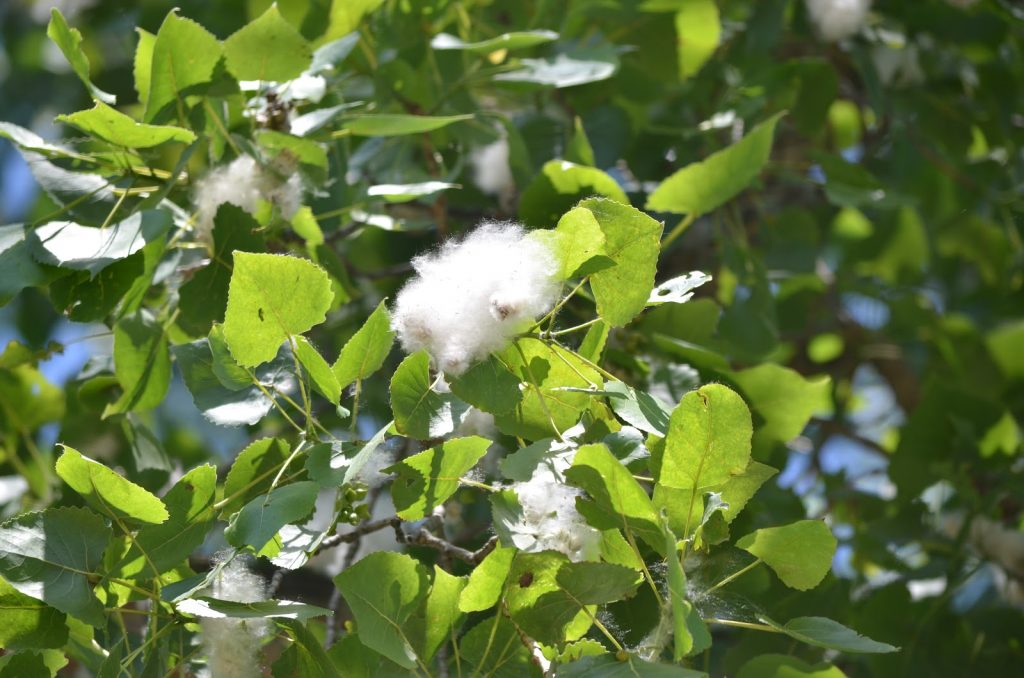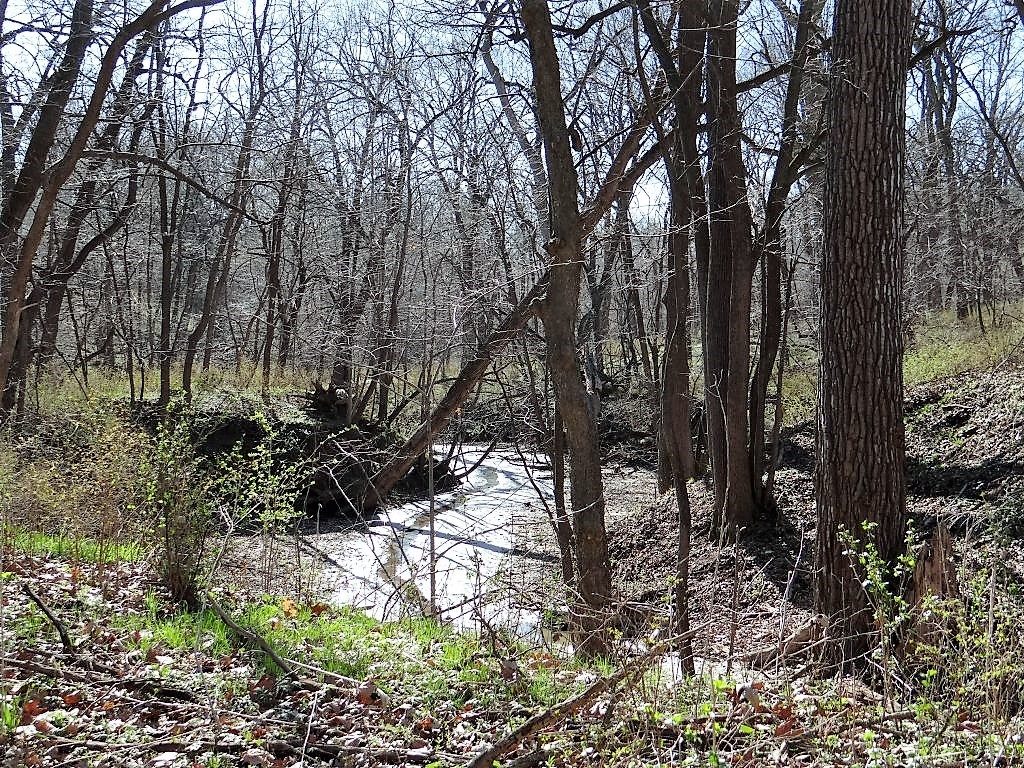As Nebraska celebrates its 150th year of statehood, an iconic, representative symbol of the state is the official tree — the native cottonwood.
The 1972 legislature named the cottonwood (Populus deltoides) as the state tree, replacing the original selection made in 1937 — the American elm (Ulmus Americana L.). The cottonwood was chosen because many elm trees had been killed by Dutch elm disease and it is rooted in Nebraska’s pioneer history.

I have great admiration for the cottonwood tree.
I can hear the sounds of its bright green, heart-shaped leaves shaking and shimmering in a warm summer breeze. I can see its golden leaves starting to emerge against the bright blue of an autumn sky.

I can feel its deep, fissure-like bark.

I can visualize the masses of cotton-type seed fluffs in the cottonwood trees in the springtime before they begin to gently, randomly drift in the air and collect on stuff.

I think I first fell in love with cottonwood trees as a young boy when I built my first tree house. It wasn’t much to behold, more like a place to perch in the tree than a tree house really. But I loved to climb up that tree and sit there looking out at the world from above. The massive strength of the big branches of that cottonwood just seemed to wrap around me. I felt safe up there, despite the danger of falling and hurting myself.
When I reflect on my wild turkey hunting adventures, my passion for the lifestyle was and still is associated with the cottonwood, as it is a preferred roost tree of wild turkeys in Nebraska.
The cotton floating around has always offered a fantastic opportunity to match the hatch in fishing and take carp with my fly rod on dry flies friends have tied that resemble those cotton fluffs produced from cottonwood trees!
The dead and dying cottonwood, their fallen limbs and leaf matter have also been magnets for me in the springtime to find those delicious morel mushrooms!

So, you see why I have such appreciation for the Nebraska State Tree.
But, I have other, non-selfish reasons for liking the cottonwood tree so much.
It has historical value.
Native Americans utilized all parts of the tree to make various things from dugout canoes to a medicinal herbal tea. Cottonwood trees were sacred objects for several Native American Plains tribes. The cottonwood tree is often associated with pioneer Nebraska because shoots were gathered and planted on homestead claims, and several famous early landmarks and meeting points were cottonwood trees.
It is fast-growing, found in many places and an excellent shade tree.
Cottonwood tree species are the fastest growing, most rapidly colonizing trees in North America. A young tree can add 6 feet or more in height each year! The cottonwood tree grows throughout Nebraska is typically found in lowlands adjacent to rivers, creeks and streams plus around lakes, reservoirs, ponds and marshes.

The cottonwood is also a very tall tree often attaining an overall height of 100 feet or more with a crown that can cover a shaded area of 75 feet or better. Mature cottonwoods provide wonderful shade in parks and wild areas for outdoor activities like camping, picnicking and fishing.
It has tremendous worth to wildlife, alive, dead or in the water.
Of course, the wild turkey prefers to use the limb structure of the cottonwood as a night roost, but they aren’t the only wildlife species to use the tree, not by a long shot.

Beaver use cottonwoods for making dams and lodges and eat the bark and buds for food. Songbirds such as grosbeaks eat cottonwood seeds. Mice, cottontail rabbits, white-tailed deer and elk feed on shoots, stems, twigs and leaves. Raptors such as bald eagles and red-tailed hawks often use cottonwood trees for nest sites, night roosts or hunting perches.

Once cottonwoods start to die, cavities in them are used by more than 40 species of animals for nesting or roosting. Squirrels live inside the hollow trunks. They are highly valuable to a large variety of cavity-dependent birds and mammals. Several species of woodpeckers not only feed on the insects that the tree supports, but excavate nest cavities in them. Wood ducks may use their hollow cavities for nesting, too.
Cottonwoods also serve as food for the caterpillars of several Lepidoptera (an order of insects that includes moths and butterflies). Hollowed out trees are even used sometimes by bats. Bees also rely on cottonwoods because they use the antimicrobial properties of cottonwood resin to make bees in their hive less susceptible to disease.
Cottonwood trees can also improve aquatic habitat. In time, cottonwood trees will provide shelter for fish in a reservoir or river setting. Cottonwood saplings carpet exposed reservoir bottoms when water levels are low and then provide excellent aquatic habitat when water levels rise and return to full pool. When cottonwoods grow near a river channel, the river erodes the banks around them until the tree is left on unstable footing. When it falls into the river, the branches, which previously would have been home to terrestrial birds and insects, will shelter aquatic invertebrates and fish. The branches in the river also help to improve water clarity by acting as a filter to remove soil and dirt sediment in the water.
It possesses other benefits to the environment as well.
The cottonwood, with its fast growth rate and resiliency, is supremely adapted to having its base covered in floodwaters. It continues to be used in terrestrial habitat projects today. According to the Nebraska Forest Service, it is planted in riparian areas for filter strips, and near streams to reduce sedimentation and stabilize stream banks. It also used in multiple row windbreaks for height and quick protection in locations with full sun and lots of moisture. The cottonwood is easily planted, one of the simplest tree species to propagate, and one of the fastest to deliver results, though it may not live as long as other trees (about 70 years).
It has modern-day uses for us.
The cottonwood supplies most of the lumber processed in Nebraska today. It has rather soft wood that it is most commonly used in making plywood, matches, ice cream sticks, crates, boxes, and paper pulp. Cottonwood catkins (long, thin clusters of tiny flowers with no petals), which are rich in Vitamin C, can be eaten raw (as survival food) or cooked The tastiest way to prepare cottonwood catkins is by frying them in a light tempura batter — which gives them a crispy exoskeleton., but still allows their distinctive flavor to be appreciated.
As exasperating as the cottonwood tree is can be to some, they are an invaluable natural resource.
I hope you will join me in celebrating the Nebraska State Tree — the native cottonwood tree. .
I remind you there is more to having cottonwoods on your property than cleaning the porch screens.

The post A Fan of the State Tree appeared first on NEBRASKALand Magazine.
















